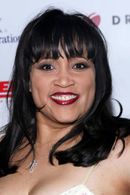Georgia O'Keeffe was born on November 18, 1887, in Sun Prairie, Wisconsin. She attended the Art Institute of Chicago in 1905 and later moved to New York City to study at the Art Students League. After working as a commercial artist, O'Keeffe became interested in Oriental design and studied art classes conducted by Arthur Wesley Dow at Columbia University.
In 1916, O'Keeffe's work was discovered by photographer Alfred Stieglitz, who exhibited some of her abstract drawings in New York. Stieglitz began to use O'Keeffe as a photographic model, creating works that explored the emotional and psychological meaning of shape, line, and tone. Their relationship was marked by a synergistic influence, with Stieglitz's photographs of O'Keeffe greatly influencing her own work.
O'Keeffe's early style featured intrinsically abstract subject matter, including details of flowers and architectural motifs. She developed a distinctive, American style, characterized by enlargements of botanical details and an iconography that included features of plant forms.
In 1924, O'Keeffe married Stieglitz, but their relationship was marked by tension and control issues. O'Keeffe eventually had a nervous breakdown and spent time in a sanatorium. Despite this, she continued to paint, producing a cycle of New York City views from 1926 to 1929.
O'Keeffe's work became increasingly focused on simple buildings, which she simplified into archetypal folk architecture. Her paintings exuded permanence and tranquility, and she eschewed criticism that found symbolism in her work. Instead, she believed that her subjects were simply a reflection of what she saw.
In 1929, O'Keeffe began spending time in New Mexico, where she became enthralled with the mesas, Spanish architecture, and desert terrain. These elements became integral to her work, characterized by clarity and unity.
O'Keeffe's most famous visual trope is arguably the sun-bleached skull of a cow, which she saw as a symbol of the desert and nothing else. She believed that the skulls were more living than the animals themselves, with their hair, eyes, and tails.
O'Keeffe continued to paint until a few weeks before her death on March 6, 1986. Her legacy is marked by a distinctive style that explored the intersection of abstraction and representation, and her work continues to be celebrated for its beauty and simplicity.
















